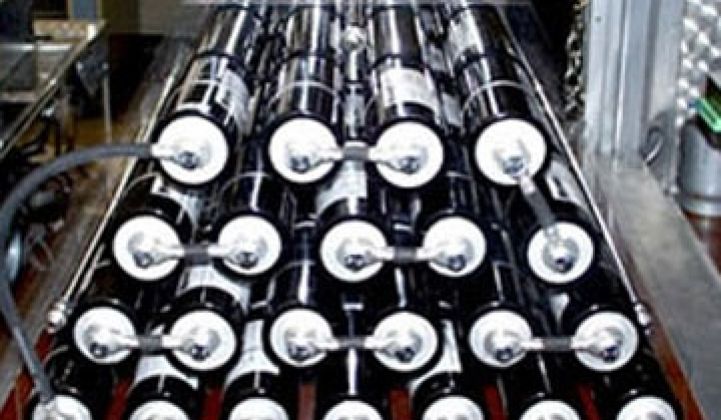EnerG2, known mostly for ultracapacitors, is joining the ranks of those that want to sell components to the storage industry.
The company formally unveiled its carbon technology platform today. With the platform, EnerG2 or third-party battery or capacitor makers can create carbon scaffolds for active materials, and together they will make up the anodes and cathodes in energy storage devices. Ideally, the final result would be longer-lasting, more reliable batteries that can store more power.
These designer carbon molecules, conceivably, also has applications in natural gas storage and lead acid batteries.
“There’s a gap in our fundamental scientific understanding of the electrochemical mechanisms that control the efficiency of how electrical energy is converted and stored chemically in advanced batteries,” said M. Stanley Whittingham, Professor of Chemistry and Materials Science and Director of the Institute for Materials Research at SUNY-Binghamton, in a prepared statement. “To close this gap, scientists must understand the relationship between carbon and active electrochemical materials used in batteries, fuel cells, capacitors, and air -- this is the critical challenge that scientists at EnerG2 are presently undertaking.”
Nice air quote. Whittingham developed the first lithium battery while working with Exxon in the '70s. Exxon dropped the ball and Sony went on to conquer the market with a different lithium formula.
Focusing on components rather than complete batteries makes sense on the surface. By just concentrating on components, a company like EnerG2 could avoid the need to raise hundreds of millions of dollars to build massive factories. Unfortunately, this is tougher than it sounds in batteries. Unlike PCs, batteries aren't a collection of independent components. They function as an organic whole. Change an electrode and you change the battery. Anodes and cathodes can give a battery its personality, similar to how an engine gives a car its personality.
To top it off, large Asian conglomerates -- which already employ extensive engineering teams and sponsor university research -- are generally reluctant to license crucial technology from startups. The large battery makers also fear losing a competitive advantage. If they license a third-party anode and their arch-rival does the same, their batteries might perform identically. The market would devolve into a price war.
Last year, Envia Systems CTO Sujeet Kumar told us Envia didn't want to make batteries -- it just wanted to sell cathodes. While VC saw merit in the idea, they all said that the business model would be extremely challenging because of the reasons noted above.
Since then, hope has begun to bloom. In January, Envia raised $17 million and $7 million of the total came from General Motors. In the same month, Argonne National Labs announced that LG Chem and General Motors completed a licensing agreement for Argonne's composite cathodes. The license might just be a form of lawsuit insurance, but LG says it will make and use cathodes based on Argonne's design.
Meanwhile, Amprius, which produces anodes with silicon nanowires, raised $25 million.
Who knows? Either way, it sounds like a lot of different companies are pulling out the battery cookbook. Something might stick.



